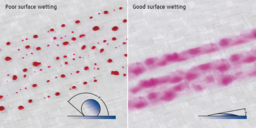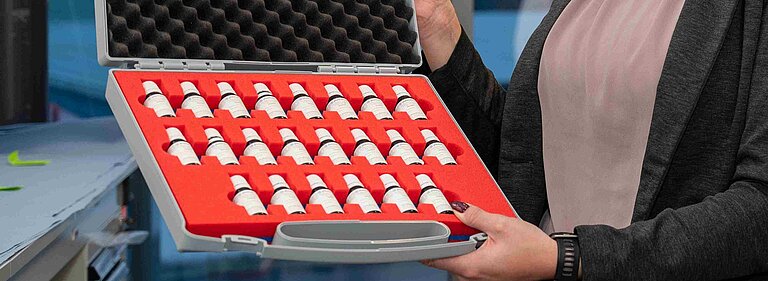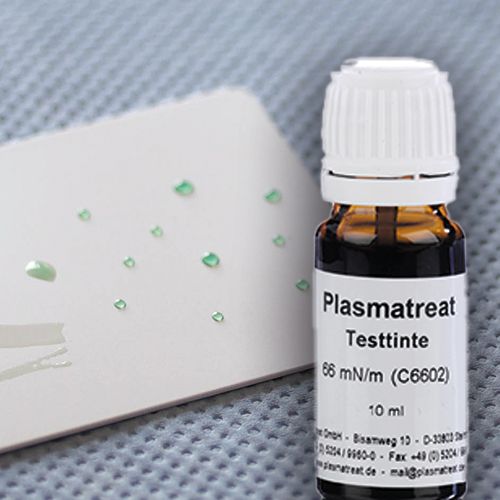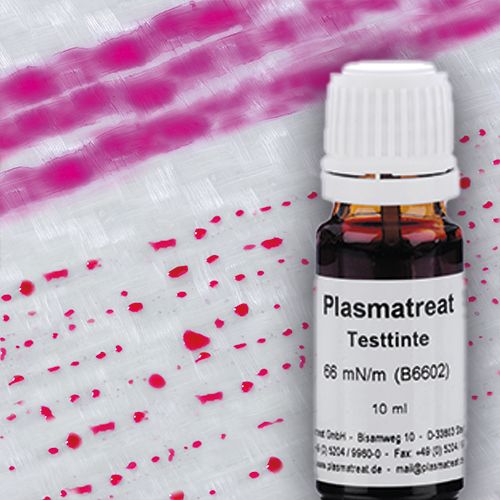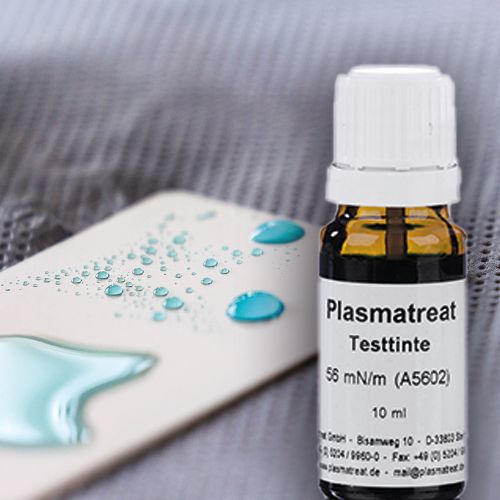Plasmatreat test inks: Measuring surface energy
A simple method to measure the surface energy of various materials, such as plastic, glass, and recycled or composite materials, is the determination using test inks. Plasmatreat test inks are an excellent tool for surface determination, quality assurance during ongoing production, and determination of accurate parameters for plasma treatment.
All Plasmatreat test inks are manufactured according to DIN Draft 53364 or ISO 8296.
Using Plasmatreat Inks Test Ink Online Order 3 Different Series Evaluating

Used all around the world: Plasmatreat Openair-Plasma® technology cleans, activates, coats and promotes adhesion
Suitable for:
- plastics, metals, glass and natural materials
- foils, sheet metal, textiles, and nonwovens
- paints, laminated cardboard packaging and other hard-to-print surfaces
- the removal of organic waste
- the removal of dust particles
- electrostatic discharging of subassemblies
Using Plasmatreat Inks
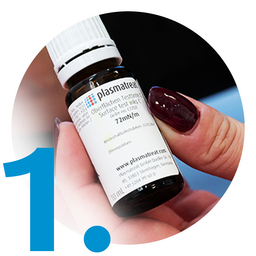
Start with an ink with a high surface energy (such as 72 mN/m) directly after the pretreatment.

If the brush strokes of the test ink contract, the next lower test ink should be used.

If the brush stroke edges are stable for two seconds, the surface is easily wettable. Then, the surface energy of the substrate is at least equal to the tension of the test ink.
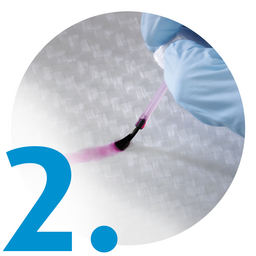
The test ink is applied quickly to the surface using the integrated brush of the bottle.
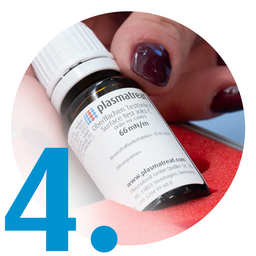
This way, you are gradually approaching the surface energy value of your material.
The surface energy of the material is equal to the tension of the test ink last used that showed good wetting for at least 2 seconds.
Important Information on Plasmatreat Test Inks
- Plasmatreat test inks should not be mixed together. Meaningful test results are only possible with original and not contaminated test inks.
- Always reseal Plasmatreat test inks immediately after use. The composition of the test inks can change due to different rates of evaporation of the constituents. For this reason, the test inks have a maximum shelf life of three months, once opened.
- Series B and C Plasmatreat test inks are suitable for PVC. Series A test inks containing formamide, cause PVC to swell which falsifies the results.
- Series A and B Plasmatreat test inks contain toxic chemicals and are produced in accordance with draft DIN standards on surface energy. Please refer to the safety data sheets.
Evaluating the test results obtained with test inks
-
By critically examining test results and evaluating different measurement techniques, a deeper understanding of surface energies and their impact on adhesive strength can be gained. It can help to optimize processes which are realted to surface treatments.
- Understanding, that surface energy is not the only factor affecting adhesive strength, will allow to consider other variables which may influence the bonding process.
- While the obtained test values are relative and have limited comparability with other measurement methods, it can still be used to make comparisons within the same measurement technique. This enables to assess the relative changes in surface energy and track the substrate's condition over time.
- Plasmatreat test inks are an excellent tool for measuring surface energy during the production quality assurance process. By using these inks and ensuring compatibility between the adhesive/ink and the surface condition, the desired surface energy levels can be effectively monitored and maintained.
- Understanding that the maximum tolerance of the measured surface energy is 2 mN/m (millinewtons per meter) can help assess the reliability of the measurements and set appropriate criteria for acceptable surface energy levels.
